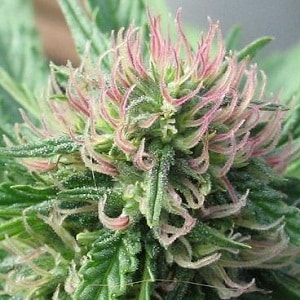Flowering Basics
Of course, getting to the flowering stage is different for every plant. If you’re growing indoors, then you have control over when the plant will start flowering. If you’re growing outdoors, however, the plants will only start flowering once certain lightness and darkness quotas are met. Unless you’re using an auto flowering variety, then having a set amount of complete darkness every night is necessary to get the plants to flower. During vegetative growth, you might leave the lights on 24/7, but when the plants have matured enough, you’ll want to switch them to a 12/12 light to darkness ratio. That means, the lights stay on for 12 hours and they go off for 12 hours straight.
It’s important to note that flowering will only occur in situations where the plant receives total darkness for approximately 12 hours. If you interrupt the darkness period even for a few seconds, you may trick the plants into thinking they’re getting more light. It should also be noted that certain varieties have “thresholds” of darkness that need to be passed. That is to say, 12 hours might not work for some plants. You might even be able to get away with a smaller length of time in the dark (say, 10 hours), and you may even need to provide as much as 14 hours of darkness.
If you’re growing outdoors, then you may be at the mercy of the of the Earth’s tilt. Varieties that have extra-long darkness thresholds will have to stay outdoors for a longer period of time. If applicable, you can but a blackout sheet over the plants so that they get the recommended amount of darkness, but that won’t always work.
Once the actual flowering process begins, you’ll start to notice distinct changes in plant growth and behavior. Male plants will differentiate themselves from female plants by creating pollen sacs rather than pistils. Male plants often tend to grow larger, earlier so that they can drop their pollen onto the female pistils and promote reproduction. Both males and females will have internodes that extend. Male flowers are rather small and they have a yellow, red, purple, or pale green color to them. Female flowers are characterized by two hairy, white stigmas that are designed to catch the male pollen. Over time, the female flowers will begin forming clusters that are referred to as “buds.”
In general, the plants will become more robust as the flowering cycle wears on. You’ll start to see more leaves, more branches, and more buds forming. In some instances, the plant will take the shape of a Christmas tree, with the bottom leaves fanning out and the top leaves sort of rising in a conical shape. The female plants will produce the nice, sticky, THC-laden buds that you will later use for smoking. If you want the THC to be at its most potent, then you don’t want the female plants to be fertilized by the male pollen. You can avoid this by determining the sex as soon as possible, and getting rid of the males so that they don’t pollinate the females. Females that have not been fertilized produce buds that are referred to as “sinsemilla” (or, “without seed” in Spanish).
The flowering process generally takes about 1 to 2 months. You will know that the plant is ready to harvest because the pistils will swell up and start to change colors. You may also start to notice a considerable increase in THC production on or around the buds. THC (short for tetrahydrocannabinol) is a sticky, almost crystalline substance that starts to form around bud clusters on marijuana plants. In terms of biology, THC is used as a mild, natural pest deterrent to keep any bugs away from the flowering plant. As far as human usage goes, THC has considerable psychoactive properties that make it interesting to smoke or ingest.
An unfertilized female plant produces more THC than any other variety of plant simply because it focuses more of its attention on growth rather than reproduction. A fertilized female plant has to focus on seed production and, thus, gives less primacy to producing THC. The substance can be found virtually everywhere on the plant but is most prevalent at the buds. Males also produce THC, but at a much smaller volume than the female plants do.










